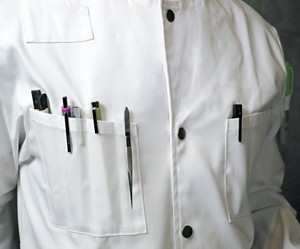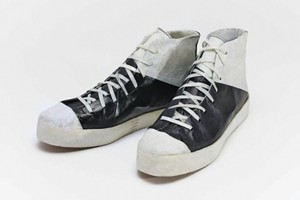Advertisement
Grab your lab coat. Let's get started
Welcome!
Welcome!
Create an account below to get 6 C&EN articles per month, receive newsletters and more - all free.
It seems this is your first time logging in online. Please enter the following information to continue.
As an ACS member you automatically get access to this site. All we need is few more details to create your reading experience.
Not you? Sign in with a different account.
Not you? Sign in with a different account.
ERROR 1
ERROR 1
ERROR 2
ERROR 2
ERROR 2
ERROR 2
ERROR 2
Password and Confirm password must match.
If you have an ACS member number, please enter it here so we can link this account to your membership. (optional)
ERROR 2
ACS values your privacy. By submitting your information, you are gaining access to C&EN and subscribing to our weekly newsletter. We use the information you provide to make your reading experience better, and we will never sell your data to third party members.
Sustainability
Newscripts
Fashionable scientists and the science of sustainable fashion
by Krystal Vasquez
November 20, 2022
| A version of this story appeared in
Volume 100, Issue 41
A lab coat for every ‘body’
When Derek Miller began his PhD in materials science, he couldn’t wait to get started with his research. But before he did, he had to go through the experimentalist’s rite of passage: picking out a lab coat.

His lab mates directed him to a dusty box in the corner of the lab, where he found a lone chemical-stained garment that was two sizes too big. When he put it on, it engulfed him. The whole experience “was very underwhelming,” he tells Newscripts.
Gradually, however, his underwhelm transformed into frustration. Even after snagging a smaller size, his lab coat’s huge, unruly sleeves constantly knocked over glassware. “And I am a very average-build White male,” he points out. “The system was literally built around people like me.”
He knew a better design had to be possible—one that was affordable, practical, and “comfortable enough that you can do a happy dance in,” Miller says. But he also knew he couldn’t come up with it by himself.
Instead, years later, Miller decided to crowdsource the design. Through his company, Genius Lab Gear, he surveyed scientists within his customer base and across social media, asking them to point out their lab coats’ major flaws.
Most of the feedback wasn’t surprising, with criticisms like poor fit, limited sizing, and inadequate pockets topping the list of complaints. But Miller quickly learned that there was an even deeper issue at play: an ill-fitting lab coat could harm a person’s self-esteem and their ability to picture themselves in science.
For example, one commenter said that every time they shopped for a lab coat, they felt “like science fields aren’t meant for ‘fat’ people.” Responses like that made Miller realize that “this is a serious problem that is driving people away from science.”
Today, Miller has turned his survey responses into a working prototype and will soon be assembling a team of beta testers to further scrutinize the design. Nevertheless, he says that more survey responses are needed to guarantee that all disciplines and body types are well represented. Those interested can find a link to the survey at geniuslabgear.com/pages/lab-coat-project.
Lab-grown leather
While Miller is designing better garments for scientists, scientists are working to make fashion more sustainable. Recently, researchers at Columbia University and the Fashion Institute of Technology teamed up to create a compostable, microbe-grown leather, which they calculated has a significantly smaller environmental impact than both cow leather and its synthetic alternatives (Environ. Sci.: Adv. 2022, DOI: 10.1039/D2VA00050D).

The material is produced from a symbiotic culture of bacteria and yeast, known as Scoby, similar to the ones used by kombucha breweries. As these microbes metabolize sugars in the tea, they naturally produce tiny strands of cellulose that dry into a strong, hide-like material, says one of the project’s lead scientists, Theanne Schiros.
But at this stage, the nanocellulose fibers “don’t have that kind of durability required of our clothes,” Schiros tells Newscripts, so additional processing steps are needed. In contrast to conventional leather production, which uses hazardous substances like chromium, Schiros and her colleagues used an emulsion of lecithin, a method inspired by an Indigenous tanning practice in which brains are used to process the animal hides.
Once tanned, the microbe-based textile can be used to make shoes and other fashion accessories. For example, in collaboration with designers from Public School NY, Schiros created a pair of sneakers, which will be showcased in an exhibit at the Montreal Museum of Fine Arts in February 2023. “The only part that’s not nanocellulose is the biodegradable cork bottom,” she explains.
Please send comments and suggestions to newscripts@acs.org.


Join the conversation
Contact the reporter
Submit a Letter to the Editor for publication
Engage with us on Twitter